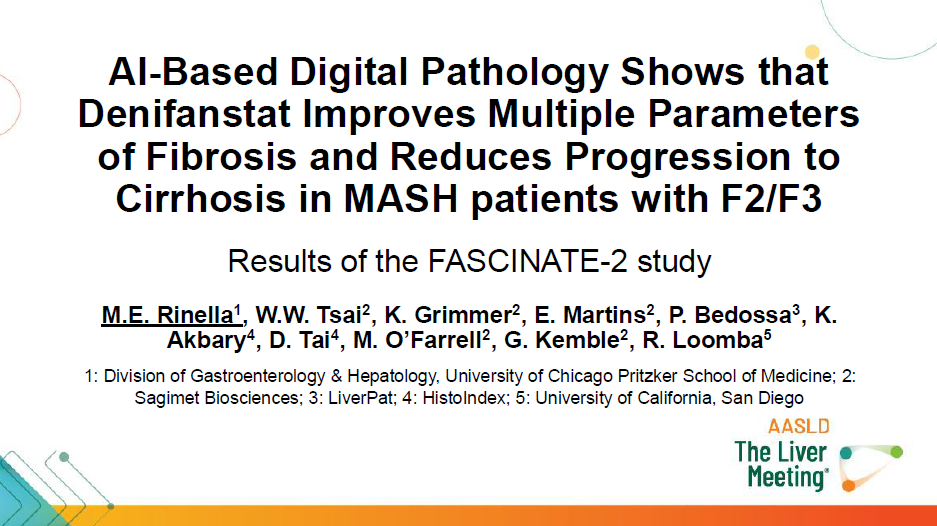Posters/Publications
oral
AI-Based Digital Pathology Shows that Denifanstat Improves Multiple Parameters of Fibrosis and Reduces Progression to Cirrhosis in MASH patients with F2/F3
AASLD The Liver Meeting
Date -
11/2024
poster
Fatty acid synthase (FASN) inhibitor reduces atherosclerosis development in diet-induced dyslipidaemia LDL receptor knockout mice with MASH
AASLD The Liver Meeting
Date -
11/2024
oral
Demonstrating denifanstat’s differentiated approach in MASH with mechanistic and clinical data showing direct anti-fibrotic activity
8th Annual MASH Drug Development Summit
Date -
09/2024
poster
Combination of fatty acid synthase (FASN) inhibitor and thyroid hormone receptor beta (THRb) agonist, resmetirom, improved markers of MASH and cardiovascular health in LDL receptor knockout MASH mice
EASL International Liver Congress
Date -
06/2024











